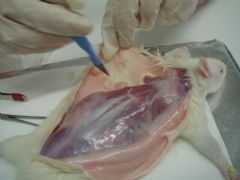In addition to sun tans, some of the athletes are returning with slight niggles that are requiring swift intervention to ensure that the recent hard work is not undermined by the effects of increasing training intensity. Achilles & patellar tendinopathies are not uncommon at this time, as coaches & athletes can overlook the fact that despite the heartening progress in training, tendons still need time to adapt to increases in load, which occurs over a 72 hour window after exposure to loading.
A recently published paper from my "friend in fascia", Robert Schleip & his team (including Andry Vleeming, Adjo Zorn & Werner Klingler) has thrown up some very interesting findings, which may have pertinence to this subject. Albeit the tests were conducted using the lumbodorsal fascia, harvested from mice & pigs (in vitro, non-human tissue obviously prevents extrapolation of the findings to a human athletic population), the authors found that following exposure to a sustained isometric, static stretch for 15 minutes, the water content of the tissue was seen to decrease (by an average of about 68%) & this was associated with a decrease in tissue stiffness. To those advocating static stretching, this may be seen as supportive evidence to your argument. What was interesting, however, was that after a subsequent rest period of 30 minutes, the water content of the tissues first returned to baseline levels before demonstrating a super-compensation associated with an enhanced tissue stiffness.
This super-compensation was also found to be greater in the fascia exposed to 6% stretch in comparison to that exposed to a 4% stretch, whilst the fact that the results were reproduced in non-viable porcine fascia (tissue from pigs) in addition to those achieved using viable murine fascia (tissue from mice), this suggests that the strain hardening effect is not (or at least not solely) caused by the active contractions of myoblasts & myofibroblasts, as Robert had earlier hypothesised.
Further studies in this area may have implications for the management of these tendinopathies, as we often see a decrease in tissue stiffness of the triceps surae (calf muscles) in the acute presentations, which one could then hypothesise may be the result of the athlete off-loading the tendon in response to pain. Furthermore, such investigations may support those studies that advocate heavy isometric loading of the same tendons during the rehabilitation phase of these tendinopathies, with the aim of increasing tissue stiffness.
Early stages of course, with a few leaps of faith thrown in if anything is to be suggested in relation to in vivo tissue in humans, nevermind athletes but absolutely fascinating nevertheless. Click below to read the published study of the paper:

